Get the best technology in advanced confined space gas detection, helping harness the innovation of engineering while augmenting safety programs for work in confined spaces. If you have questions regarding confined space regulations or training, feel free to give us a call and ACUTE would be happy to help. The latest advances in confined space gas detection offer a panoramic view into all facets of confined space work sites, multiple gas detection capabilities, wearable technology, and high-speed calibration. Even with the best technology, however, there is no replacement for the quality, hands-on training provided by ACUTE. Join ACUTE and companies across Ontario who are on the journey to zero incidents. Get Confined Space Training in Ontario and get your company to zero incidents.
RAE Systems demonstrated a connected gas detection system that offers thorough information for safety planners monitoring the safety of work sites.
https://www.youtube.com/watch?v=bqWhHDoKBas
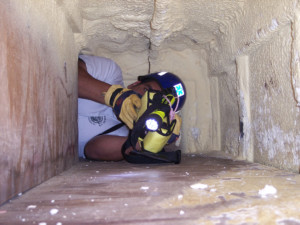 What is Confined Space Gas Detection
What is Confined Space Gas Detection
Technologies are tools that are used serve to help workers during confined space work to manage and monitor the gas levels and the air quality of a chamber. In conjunction with safety procedures and confined space entry permits, it is one piece of crucial technology that helps workers stay safe even while hard-to-detect hazards like Carbon Monoxide or Asbestos play a factor during cleaning or construction operations.
Why Confined Space Gas Detection Matters
Confined spaces present health and safety hazards, one of which is the degradation of air quality or the risk of incapacitation from noxious gasses. Team members can be fatally affected even before a confined space rescue team arrives or the incident is reported. Gas detection and monitoring can mean the difference between returning to work or a final work shift that takes valued team members away. Just this month 6 people went to the hospital in St. John’s, Newfoundland, due to exposure to fumes in a confined space while undertaking a painting assignment within a confined space on a ship, as reported by CBC. Confined space safety is a concern for all employers and employees and gas detection technology has been an area of focused innovation.
Advances in Confined Space Gas Detection
EHS writes that confined space injuries and fatalities are a common narrative not only for immediately impacted victims but also for those who may follow in the rescue effort. Recognizing this health and safety challenge, manufacturers continue to press forward in their advancement of confined space detection technologies. Here are some of the latest applications and technologies being deployed to help mining, industrial, and custodial professionals across many industries:
Wireless Gas Monitoring Systems
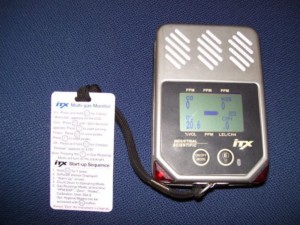
Image provided by Sansumaria (Wikipedia)
Wireless monitors worn by confined space workers provide real time data that is fed to a monitoring system manned by another team member. This enables a team of individuals to monitor the on-going air quality within a chamber despite the work site being spartan or only allowing single occupancy. The monitor allows another team member to identify when gas levels reach thresholds, thereby offering an opportunity to warn and manage the evolving environment. This level of visibility and automation can help safety professionals work alongside employees being exposed to confined space hazards.
Benefits:
- Allows gas/air quality measurement without exposing a team member to risks
- Enables active monitoring and warnings when a work area becomes unsafe
Wearable Technology: Vitals Monitoring
A Bio harness can be used to detect the impact of gas or airborne hazards on a team member. This can help provide a deeper level of insight on the actual effects of confined space hazards in real time. The harnesses typically provide information on heat stress, overwork, ambient temperature, heart rate, breathing rate, and more.
Benefits:
- Get real time vitals on a team member without exposing others to risk
- Can help team members know their physical limits
- Manage team members before they reach critical exposure
Note: This video is provided to illustrate technology rather than as a recommendation. Contact ACUTE if you need help choosing a product for your industry.
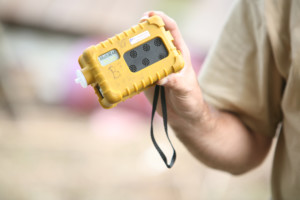
Orange County, TX, September 18, 2008 – Leif Skoogfors/FEMA
Multi-Gas Monitoring Devices
With advances in technology and convergence of applications, gas monitoring devices can now detect and alert on various gasses allowing for broader safety precautions. Notable gas detectors can detect 190 VOCs (Volatile Organic Compounds) and 55 combustible gasses, providing versatility in helping manage evolving hazards within a work site.
Benefits
- One device to manage multiple airborne hazards
- Wireless
- Ability to reduce hazards from cables
Clients rely on ACUTE’s training and equipment knowledge, see how we can help your team today:
“ACUTE’s trainers have a passion for the material and care about their clients.”
 High-Speed Calibration and Instrumentation Testing
High-Speed Calibration and Instrumentation Testing
Long past are the days where instrumentation testing would take hours to test and calibrate. With recent advances, gas detectors can be calibrated in as little as 2 mins with bump tests that can be done in seconds. This speed and accuracy in preparing equipment can help your team manage emerging situations when unforeseen gas leaks occur or when a team members has been knocked out in a confined space.
Benefits
- Rapid instrumentation testing/calibration
- Faster response time that can make the difference during rescue
The Confined Space Training Programs ACUTE Offers
Learn the best way to use the latest and greatest tools with ACUTE’s Confined Space training. Each of the Confined Space training courses are available for sign-up and are offered throughout the year. If you have company training needs where there are a reasonable amount of delegates who need training, yet are unable to attend sessions on the training calendar, please reach out to the team to discuss a possible alternative arrangement.
 Confined Space Entry Awareness Training
Confined Space Entry Awareness Training
This training program will familiarize a participant with the requirements of Ontario Regulation 632/05 – Confined Spaces. Furthermore, the training program is intended to provide entrants, attendants, and competent persons the skills and training required to recognize confined space entry risks and how to establish corresponding controls. Participants will have the opportunity to become familiar with, inspect, and use Confined Space Entry (CSE) access equipment and air quality instrumentation.
This course is 8 hours in length (1 day).
Learn more about this course – click here
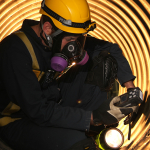 Confined Space Component Person Training
Confined Space Component Person Training
This course is for confined space program administrators and those directly responsible for supervising confined space operations, as they require deeper insight and understanding with respect to confined space hazards that may exist or accumulate in a space. These hazards may exist or accumulate because of the confined space’s configuration, contents, location, and the work activities to be performed in the space. Those overseeing confined space entry, either directly or indirectly, must be aware of suitable corresponding control measures to keep confined space workers safe. ACUTE can customize its confined space entry courses to provide equipment-specific, relevant training to its clients.
This course is 16 hours in length (2 days).
Learn more about this course – click here
This training program builds on the content of the Confined Space Entry Awareness course to train participants on the considerations involved in safely performing a rescue from a confined space, and how to perform a safe rescue.
This course is 8 hours in length (1 day).
Learn more about this course – click here
Note: ACUTE provides a wide range of employee safety training courses.
 Confined Space Training Ontario – Regulations
Confined Space Training Ontario – Regulations
All employees entering the confined space and all employees contributing to the work that involves the confined space need to be trained. Employers are responsible for the safety of employees working in confined spaces and are liable for negligence in failing to provide training or in offering sub-par training.
Click here for a more in-depth summary or here to view the confined space regulations in full.
Click here for confined space rescue guidelines.
ACUTE Helps Clients Get the Best Confined Space Training
Despite the best technologies, confined space hazards remain a reality, but injuries and casualties don’t have to be. ACUTE is in the business of protecting the safety and well-being of clients using real-world industry experience. Our training is conducted hands-on and tailored to your confined space program and plan as stipulated by the MLITSD and as a measure of due diligence to safeguard lives, because all lives matter.
- Open Door Instructor-Student Partnersh
 ip: ACUTE’s training services emphasize client participation. ACUTE staff foster relationships with clients and serve as a touchstone for advice moving forward.
ip: ACUTE’s training services emphasize client participation. ACUTE staff foster relationships with clients and serve as a touchstone for advice moving forward. - Serving Your Team and Industry: With a vast array of clients in manufacturing, construction, health, academic, and government sectors, ACUTE brings the best safety practices and insights from across the spectrum to your workplace.
- 100 Years Combined Experience: ACUTE provides comprehensive health and safety training, on-site safety services, and consulting services. With over 100 years of combined experience, our staff offers more than theoretical or abstract ideas. ACUTE offers solutions.
- Track Record of Success: ACUTE is rated 4.9/5 stars on Google reviews, demonstrating a commitment to our clients, quality, and a passion for training. ACUTE offers record keeping to help you stay compliant and ensure training needs are met.
Contact us today for quality training in your workplace or on-site at ACUTE’s proven training facilities!
ACUTE is located in Waterloo, Ontario, and services customers from Toronto, Mississauga, Brampton, Hamilton, Milton, Kitchener, London, Guelph, and across Ontario.


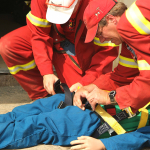 Confined Space Rescue
Confined Space Rescue